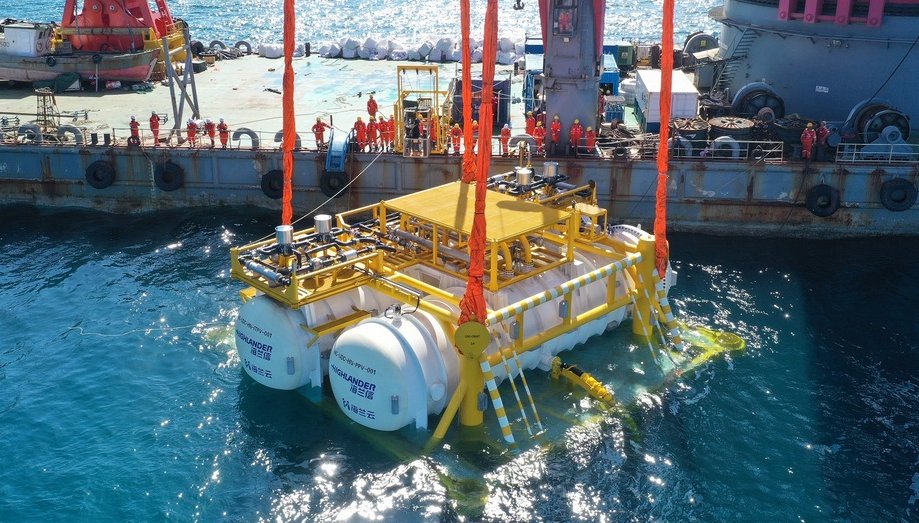China redefines CPU water cooling with an huge 130,000 ton data center under the sea
A whole new way to warm the oceans.

You know those dystopian notions of seas boiling over thanks to climate change? Well, China has a neat idea to accelerate a process which is already giving us the warmest sea surface temps on record. Heating up the oceans directly with computers.
OK, that's rather facetious; there have been numerous studies into such an endeavour, with Microsoft running a similar setup for two years near the Orkney Islands just off Scotland with some ecological success. But China has reportedly begun construction on what's claimed to be the world's first undersea data center. Allegedly, once complete the facility will have the computing power of "six million conventional personal computers."
It's unclear exactly what that means or what the hardware involved comprises. But it will be made of of no fewer than 100 of the huge looking "nodes" pictured above, each of which weighs an incredible 1,300 tons. However, you slice it, then, it's a lot of kit being submerged 35m under water off the coast of Sanya, Hainan province, China.
Central to the entire premise is using sea water as the primary coolant. It's said that this will save a hefty 122 million kilowatt-hours of electricity annually on cooling compared with a conventional on-land data center.
It would be interesting to know how the net warming footprint compares between this approach and electrically powered air-cooling solutions of existing data centers. The thermal impact of a single server farm would just be a drop in the ocean, if you'll pardon the pun. Though if there were thousands of such nodes that might be a different matter.
This isn't the first time we've heard of computer servers being dumped in the sea for cooling purposes. But this Chinese installation does seem to be on a rather unprecedented and epic scale.
Exactly how practical all this is, well, that's an open question. Swapping out dead CPUs, SSDs or whole servers would, we assume, be off the cards with this kind of installation. In the Microsoft experiment which finished in 2020 it sealed the undersea chamber, filling it with dry nitrogen which made for a far less corrosive atmosphere than an oxygen-rich one, improving reliability over a land-based equivalent.
Keep up to date with the most important stories and the best deals, as picked by the PC Gamer team.
There's no indication here that the new server farm is doing the same thing, but the nodes or modules are apparently each designed to run for 25 years and perhaps the very long term idea is they can be individually recovered and serviced.
Anyway, the full 100 nodes are slated to have been installed by 2025, so if you pop out for a dip around then and find it's a little warmer than you expected, well, you'll know why.
Best CPU for gaming: Top chips from Intel and AMD.
Best gaming motherboard: The right boards.
Best graphics card: Your perfect pixel-pusher awaits.
Best SSD for gaming: Get into the game first.

Jeremy has been writing about technology and PCs since the 90nm Netburst era (Google it!) and enjoys nothing more than a serious dissertation on the finer points of monitor input lag and overshoot followed by a forensic examination of advanced lithography. Or maybe he just likes machines that go “ping!” He also has a thing for tennis and cars.



